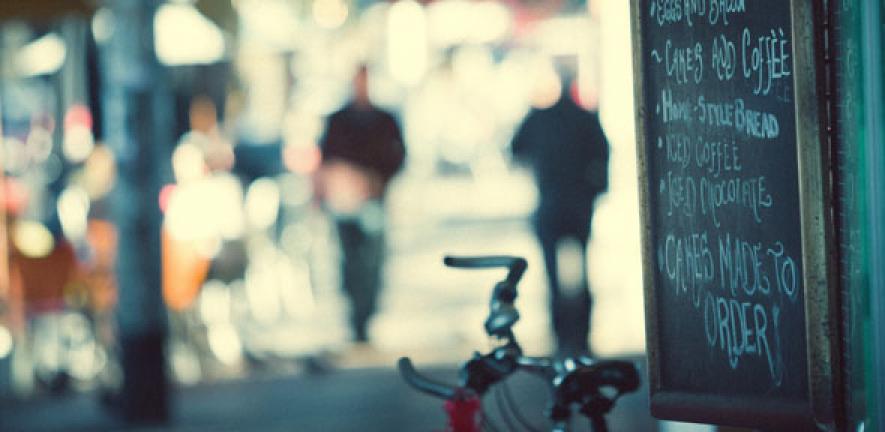
Desislava Hristova (Computer Laboratory) discusses how data from location-based social networks can be used to predict when a neighbourhood will go through the process of gentrification.
Desislava Hristova (Computer Laboratory) discusses how data from location-based social networks can be used to predict when a neighbourhood will go through the process of gentrification.
When you walk through a neighbourhood undergoing gentrification, you can sense it – the area is dominated by strange contradictions. Public spaces are populated by vagabonds and cool kids; abandoned buildings sit in disrepair next to trendy coffee shops; blocks of council housing abut glassy new developments.
Urbanists describe gentrification as a form of urban migration, where a more affluent population displaces the original, lower-income population. In statistics, gentrification appears as the lowering of crime rates, rising housing prices and changes to the mix of people who live there.
If we could only predict where gentrification is likely to strike next, we might be able to alleviate its negative impacts – such as displacement – and take advantage of its more positive effects, which include economic growth. That’s why our latest study – conducted with colleagues at the University of Birmingham, Queen Mary University of London, and University College London – aimed to quantify the process of gentrification, and discover the warning signs.
Detecting urban diversity
We constructed four measures of urban social diversity using data from social media. By combining these measures with government statistics about deprivation, we were able to pinpoint a number of neighbourhoods undergoing gentrification in London.
Of course, social media is notoriously unsuitable for population studies, because of the “digital divide”: the split between people who can access the internet and those who can’t exists even within urban areas – so information from social media only captures part of the overall picture. Twitter users in particular are known to be predominantly young, affluent and living in urban areas.
But these are precisely the demographics responsible for gentrification. So, we used information from social media from 2010 and 2011 to define the “social diversity” of urban venues such as restaurants, bars, schools and parks.
Urban social diversity – in terms of population, economy and architecture – is known to be a factor in successful communities. In her famous book The Death and Life of Great American Cities, urban activist Jane Jacobs wrote that “cities differ from towns and suburbs in basic ways, and one of these is that cities are, by definition, full of strangers”.

In our work, we first measured the amount of strangers that a place brings together as the fraction of the social network of visitors who are connected on social media. This gave us an idea of whether a place tends to be frequented by strangers or friends. We further explored the diversity of these visitors in terms of their mobility preferences and spontaneity in choice of venues. Although we did not consider demographics or income levels, there is a known relationship between the wealth of people and the diversity of their geographical interactions.
We studied the social network of 37,000 London users of Twitter, and combined it with what we knew about their mobility patterns from geo-located Foursquare check-ins posted to their public profiles.
By studying the amount of strangers versus friends meeting at a bar, or the number of diverse versus similar individuals visiting an art gallery, we were able to quantify the overall diversity of London neighbourhoods, in terms of their visitors.
Networks are powerful representations of the relationships between people and places. Not only can we draw links between people where a relationship – such as friendship – exists between them; we can also draw connections between two places if a visitor has been to both. We can even connect the two networks, by drawing links between people in the social network who have visited specific spots in the place network.
In this way, we are able to extract the social network of a place, and the place network of a person. By the time we’d finished crunching the data, we could take stock of the range of people who had visited a specific place, and the different places visited by any individual.
When we compared the diversity of urban neighbourhoods with official government statistics on deprivation, we found that some highly deprived areas were also extremely socially diverse. In other words, there were lots of diverse social media users visiting some of London’s poorest neighbourhoods.
Diminishing deprivation
To find out what was going on, we took the newly published deprivation indices for 2015 and looked for changes in the levels of deprivation from our study period in 2011. The relationship was striking. The areas where we saw high levels of social diversity and extreme deprivation in 2011, were exactly the same areas that had experienced the greatest decreases in deprivation by 2016.
A prime example can be found in the London borough of Hackney. Anyone visiting Hackney might describe it in terms of the contradictions we mentioned before – but few of us could afford to live there today. In our study, Hackney was the highest ranking in deprivation and the highest ranking in social diversity in 2011. Between then and now, it has gone from the being the second most deprived neighbourhood in the country, to the 11th.
So, although social media may not be representative of the entire population, it can offer the key to measuring and understanding the processes of gentrification. Neither entirely good nor thoroughly bad, gentrification is a phenomenon that we should all watch out for. It will undoubtedly help to define how our cities transform in years to come.
Desislava Hristova, PhD Candidate, University of Cambridge
This article was originally published on The Conversation. Read the original article.
The opinions expressed in this article are those of the individual author(s) and do not represent the views of the University of Cambridge.

The text in this work is licensed under a Creative Commons Attribution 4.0 International License. For image use please see separate credits above.




